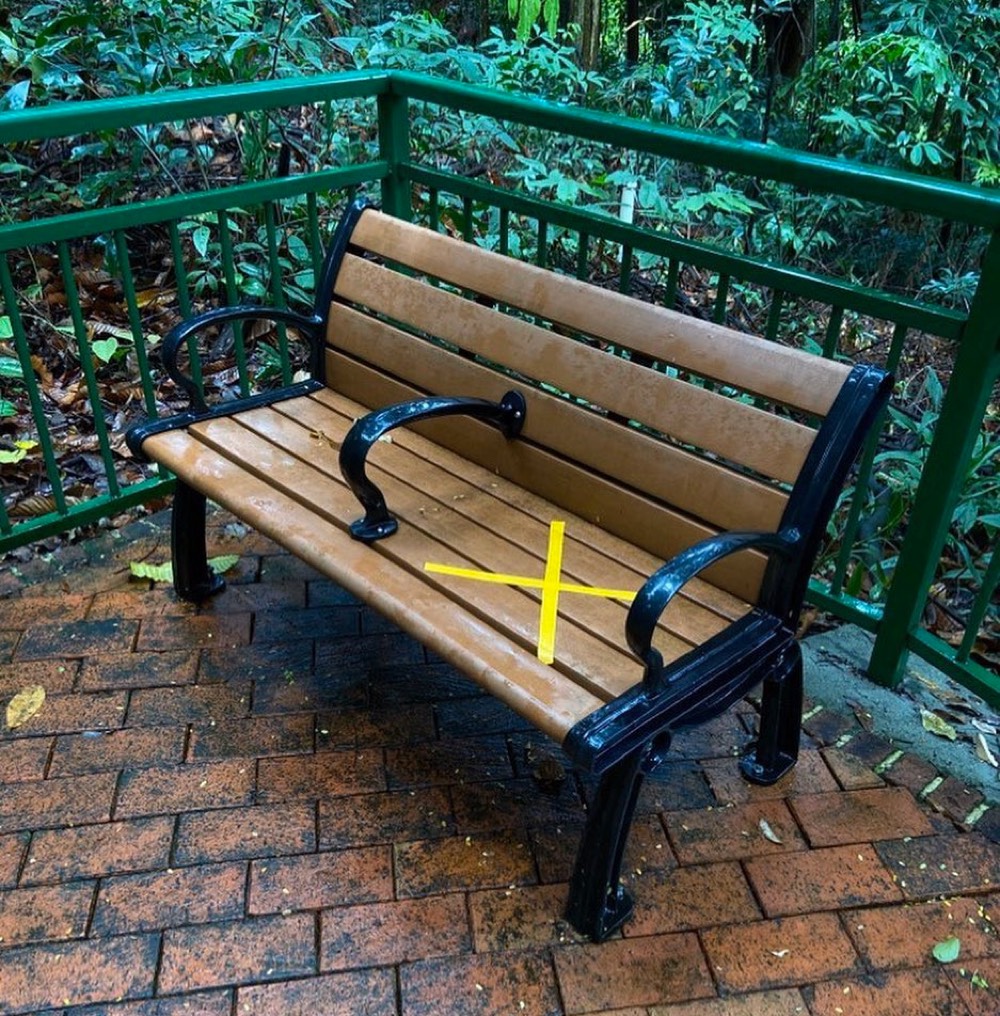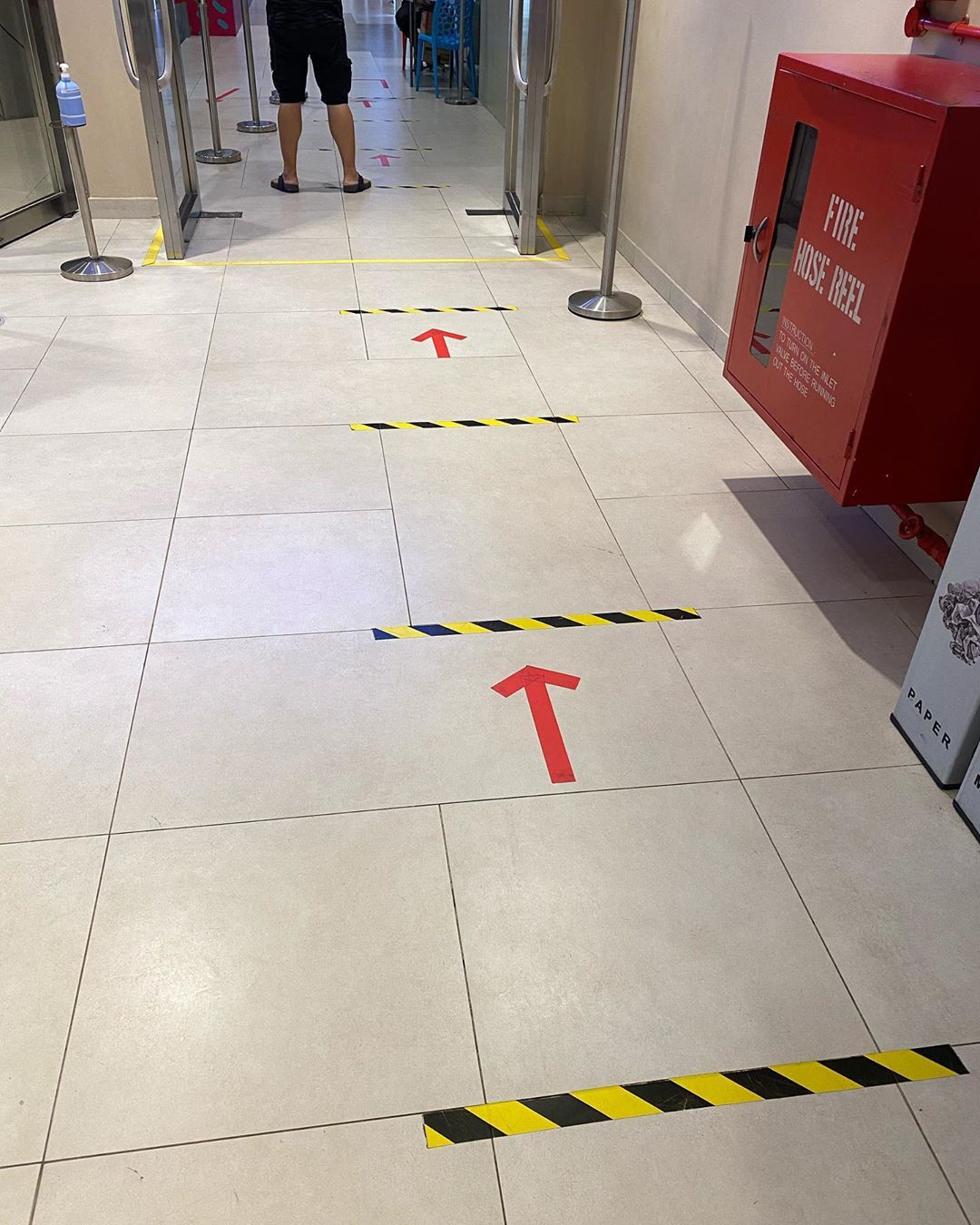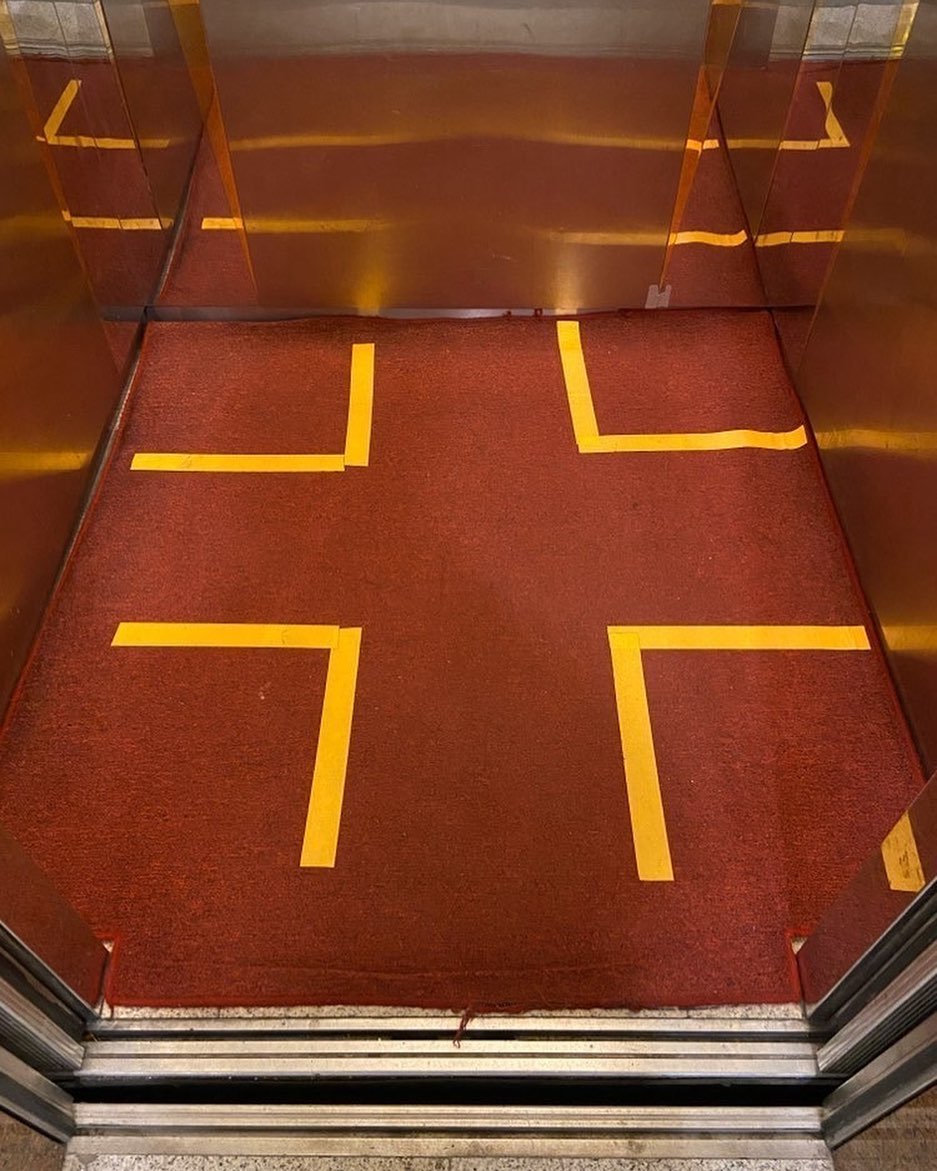Absent context, images from the Tape_Measures feed on Instagram could look like a series of art interventions. In light of a global disease outbreak, though, they are clearly signs of the times showcasing how a low-budget tool can help reinforce social distancing practices.

In some places, taped ‘X’s mark out seats to separate sitters; in others, boxes, lines, or arrows show people where to stand in a queue; in still others, tape has been hastily wrapped around entire spaces or structures (like playgrounds) to keep people from using a place at all.

Lately, there has been a lot of discussion around how COVID-19 will reshape architectural, interior and urban design practices — what the legacy of the current crisis could be with respect to how we make and use buildings and cities. Some big design ideas of the moment are speculative, though, while others will take time and money to implement; which ones stick and which don’t remains to be seen.

Meanwhile, tape and signs are quick, inexpensive and adaptable. On the one hand, such interventions show how low-tech tools can play a shifting role in an evolving crisis. On the other hand, there are still serious problems tape can’t solve and there is room to criticize some of these interventions for providing a false sense of security, particularly in the absence of other measures. Social distancing may be possible in more open and well-ventilated spaces, but it’s harder to imagine taped squares having much of an impact in an enclosed elevator. At best, tape is one tool in a box that should be as big as possible.
For more examples of all stripes, follow Tape_Measures on Instagram.



Leave a Comment
Share